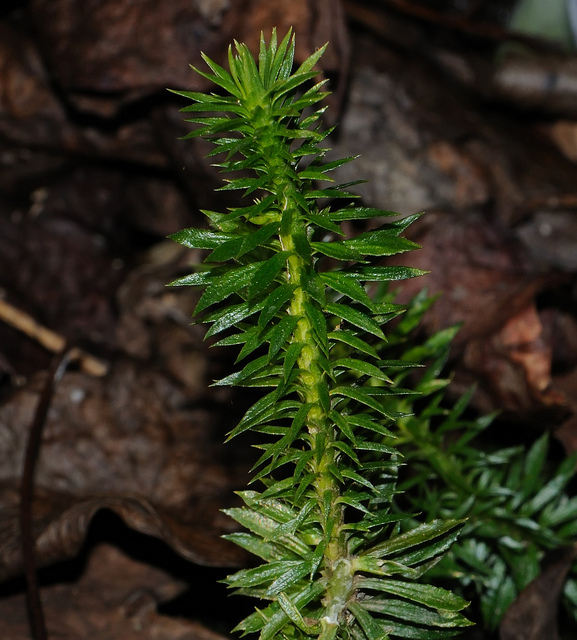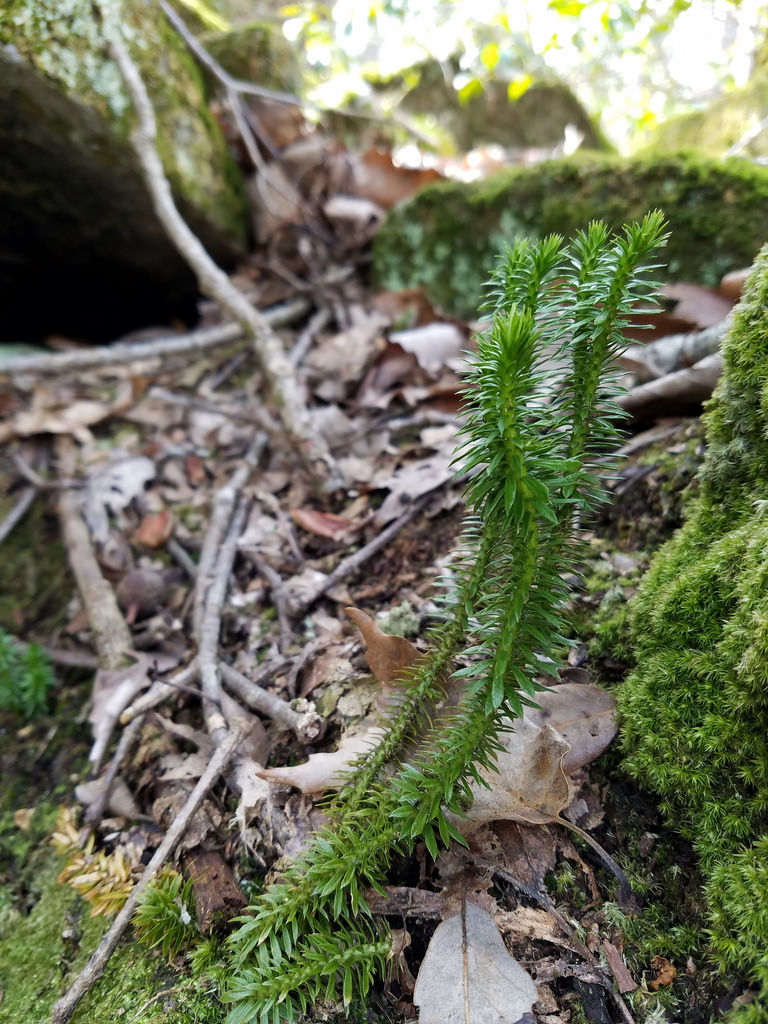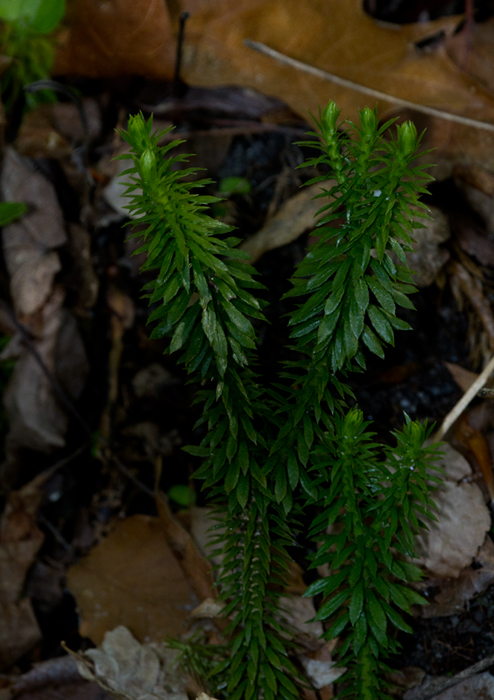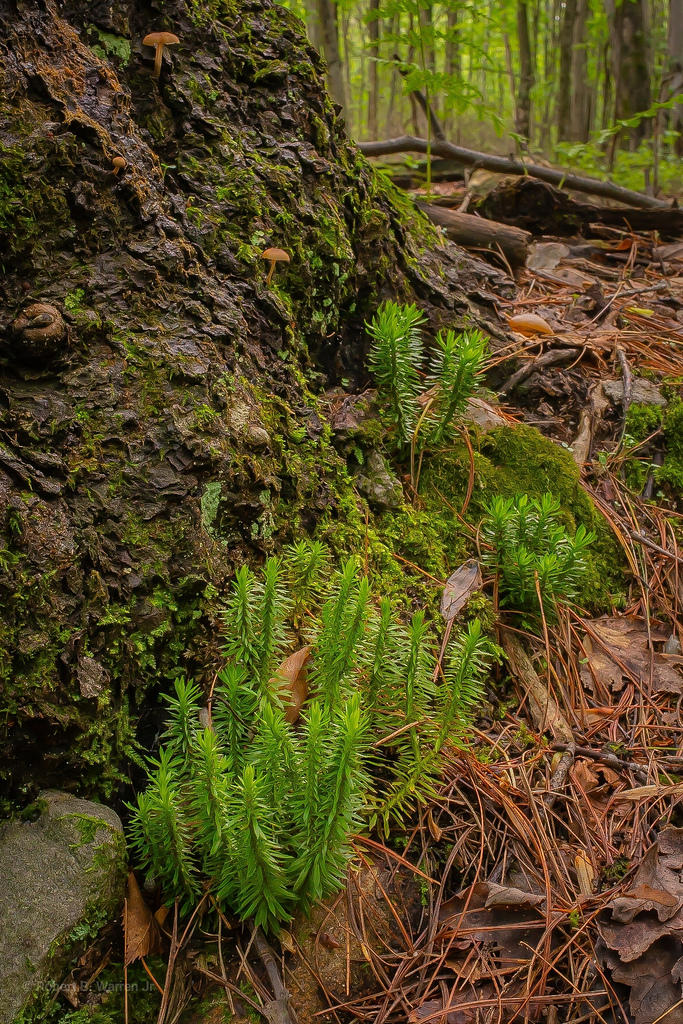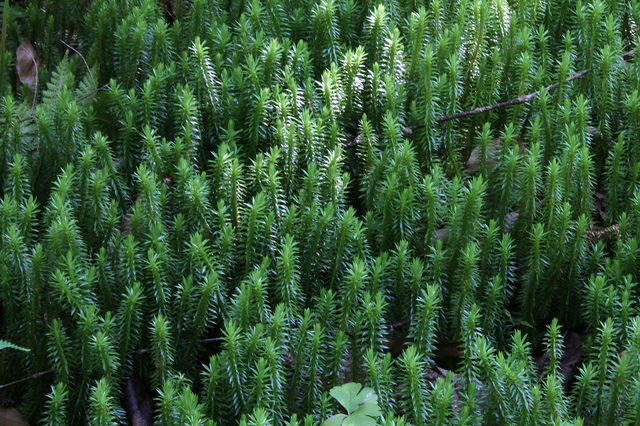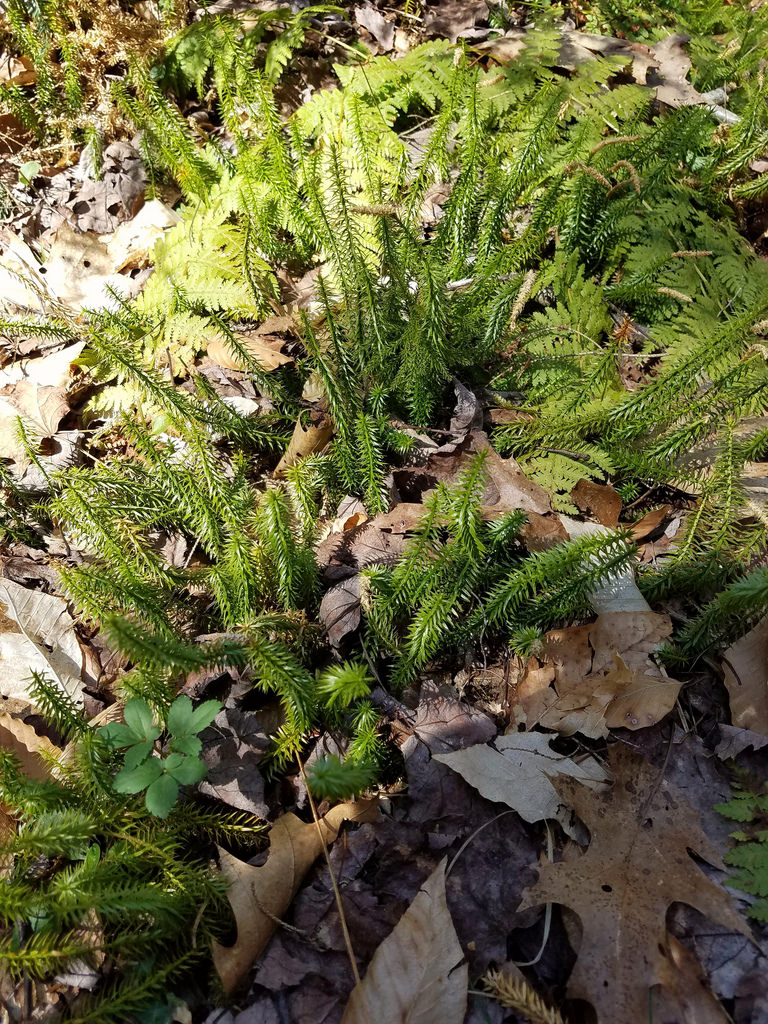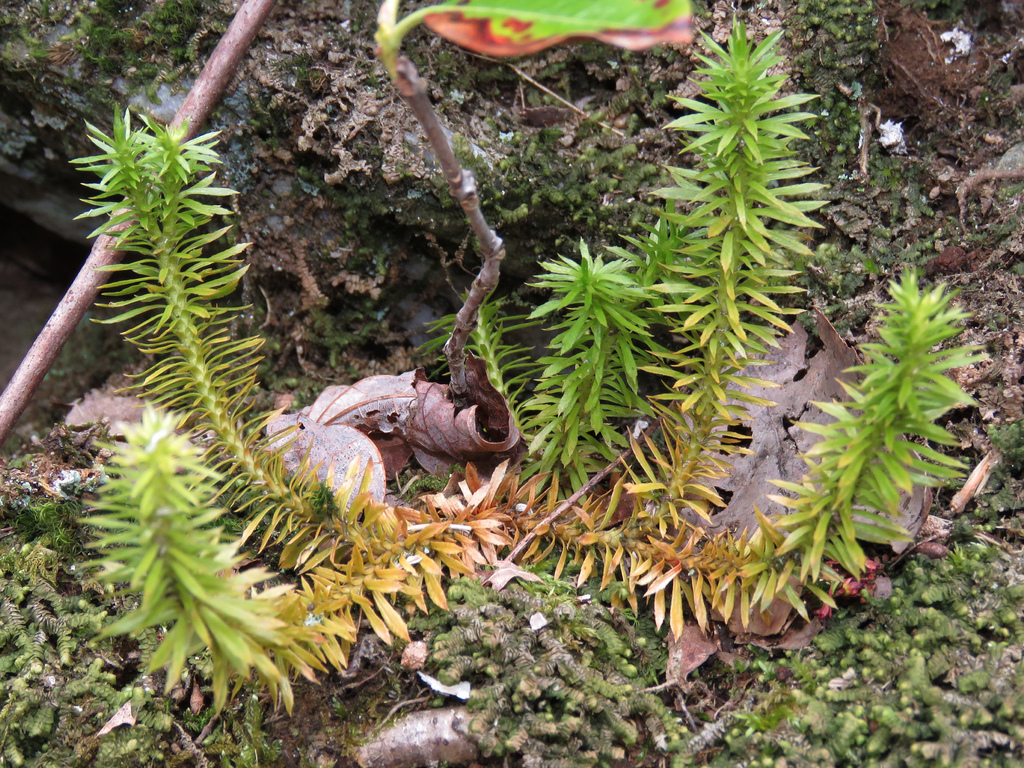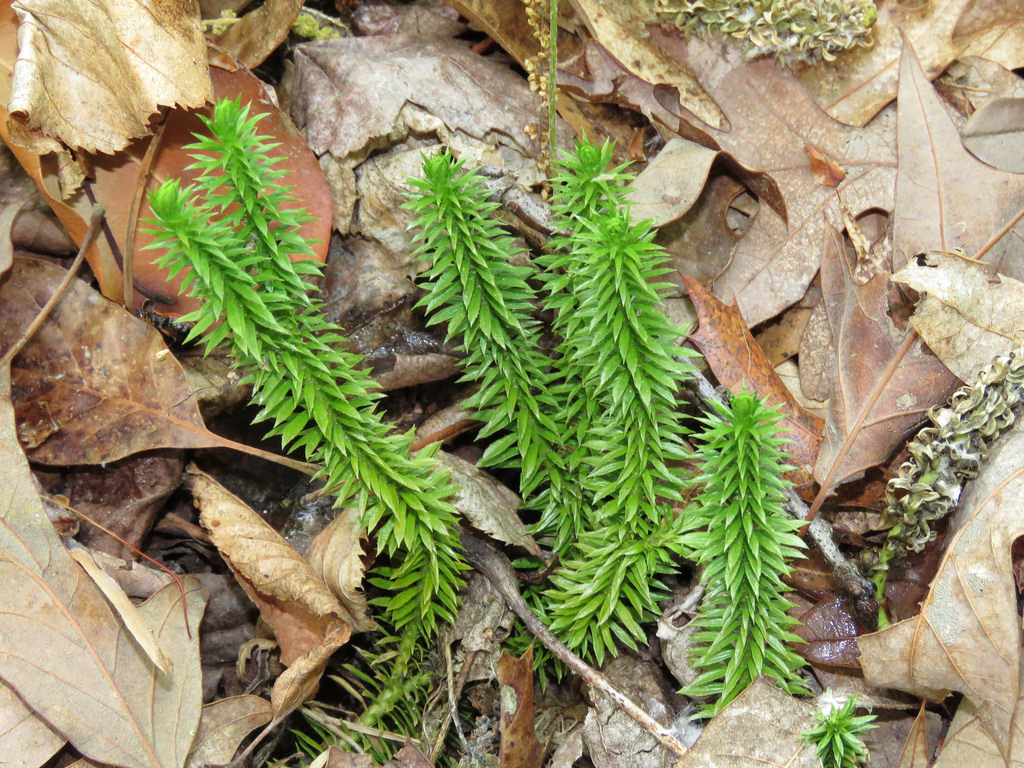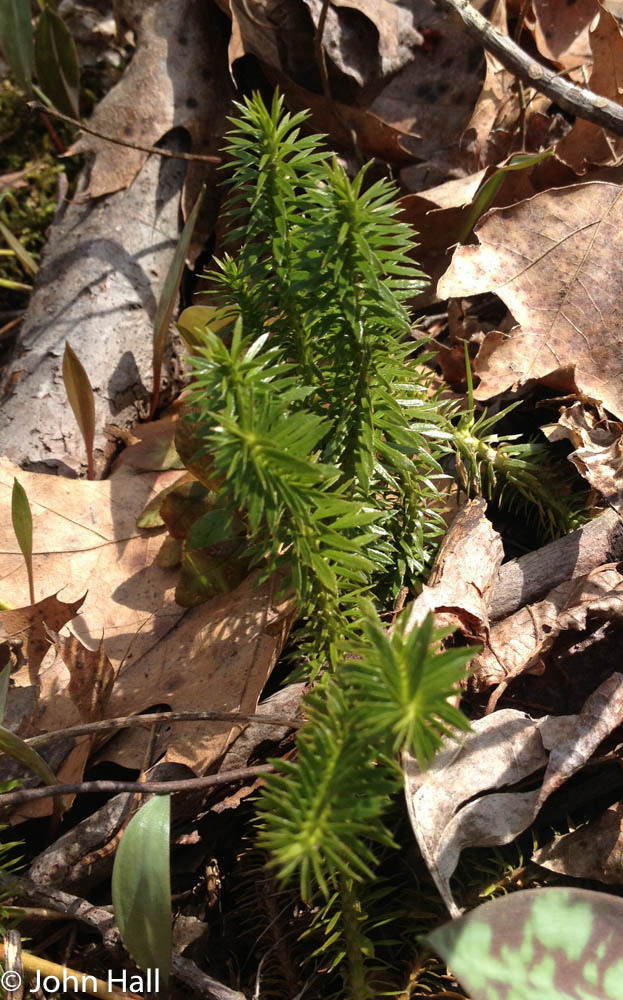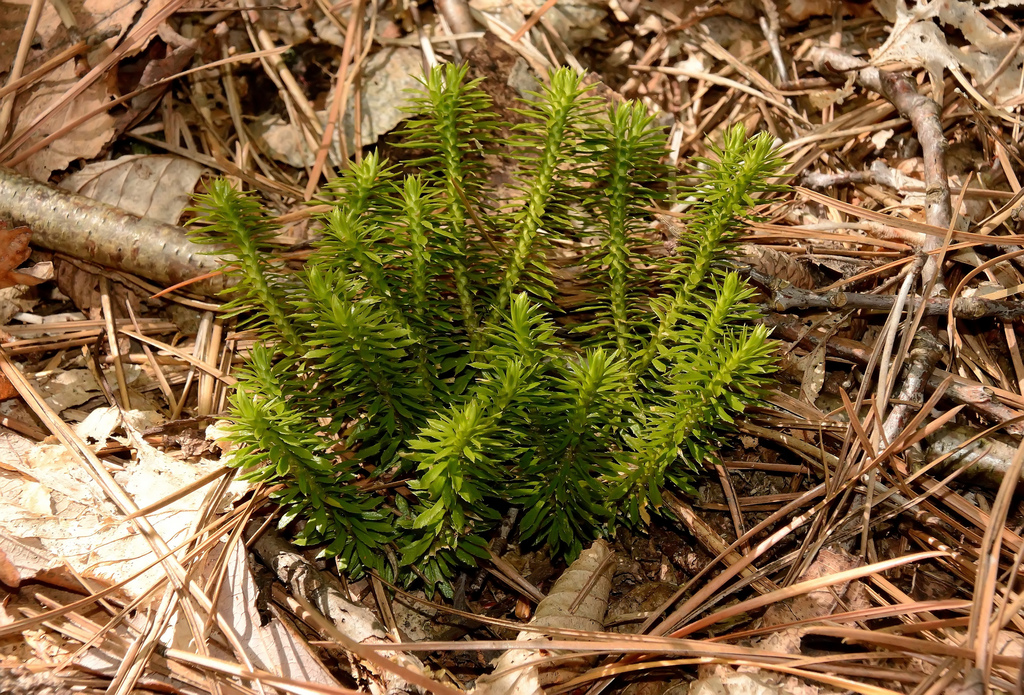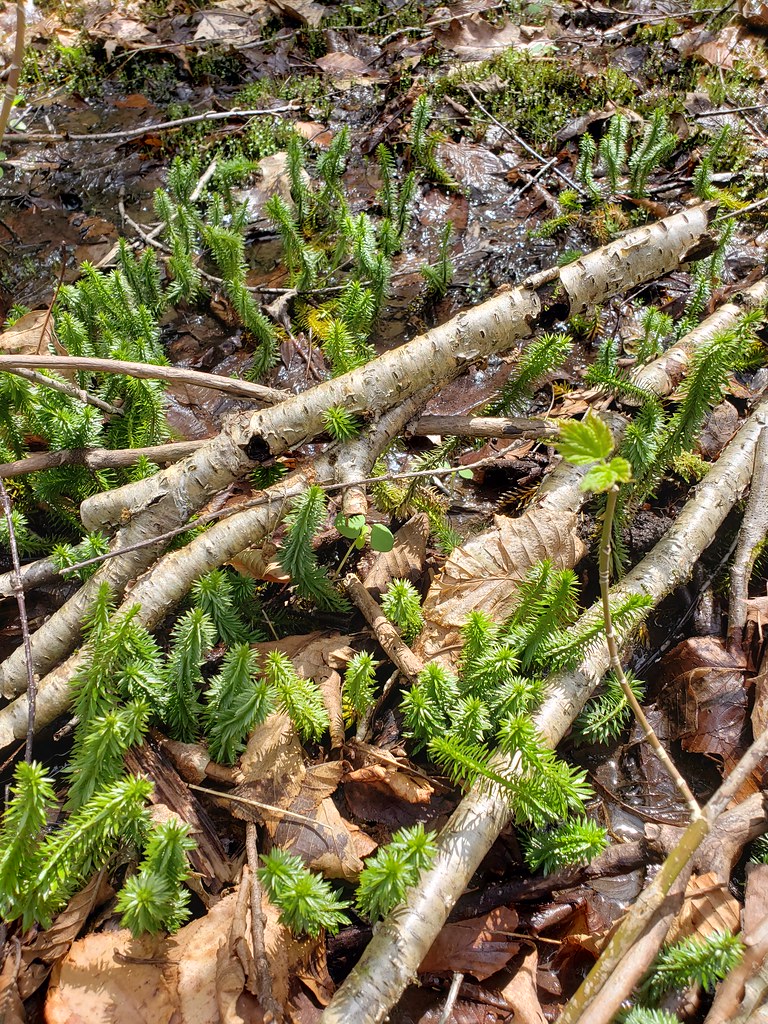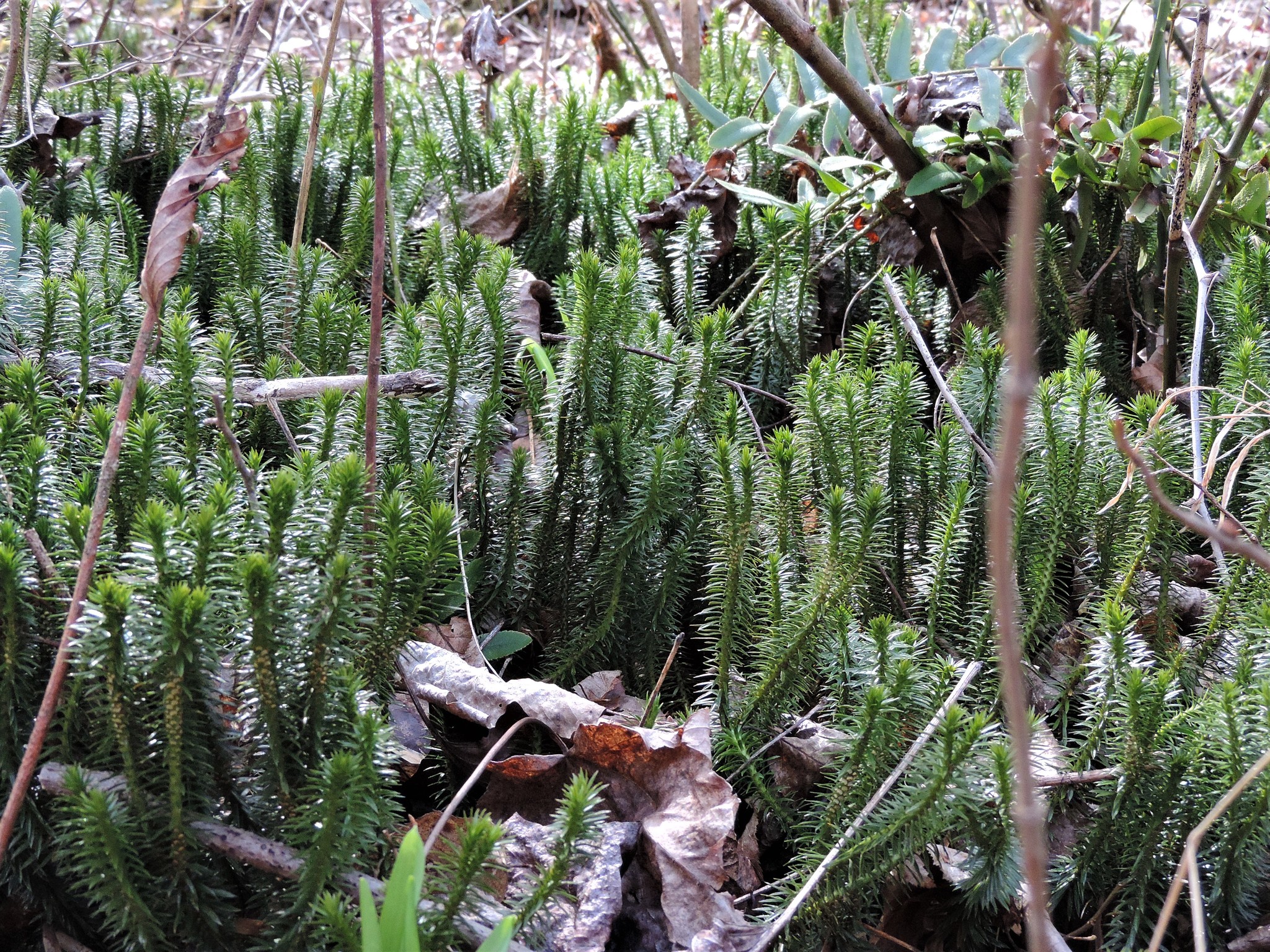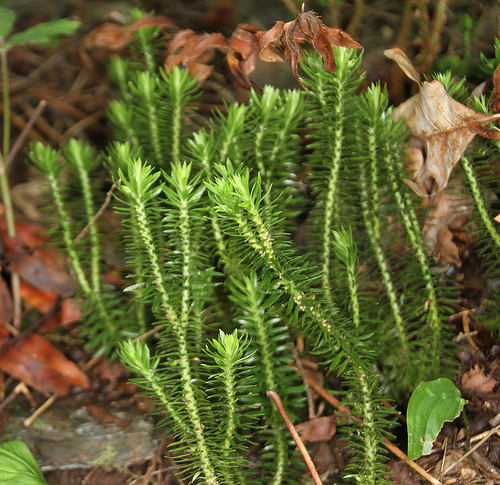Map Snapshot





















226 Records
Status
Shining Clubmoss is an uncommon clubmoss that is found throughout Maryland. Shining Clubmoss can be found in a variety of habitats including wooded slopes and along stream banks and wooded swamps. Shining Clubmoss is rarely found in open or dry habitats.
Description
Shining Clubmoss is very similar to the extremely rare Rock Clubmoss (Huperzia porophila) which is now considered extirpated in Maryland. Rock Clubmoss should only be expected on the Allegheny Plateau so any Huperzia species seen east of Garrett County is almost certainly Shining Clubmoss. To differentiate between the two Huperzia species we first look at habitat. Shining Clubmoss can be found in a variety of moist wooded habitats while Rock Clubmoss is only found on sandstone cliffs near waterfalls. Secondly, the leaves of the two species are shaped differently (a 10x hand lens helps in observing Huperzia leaves). The leaves of Shining Clubmoss are lanceolate while the leaves of Rock Clubmoss are oblanceolate (meaning the tip of the leaves is rounded/blunt). The leaves of Shining Clubmoss have large serrations along the edge of the leaf while the leaf edges of Rock Clubmoss have few serrations that are very small (Weakley, 2015).
Seasonality Snapshot
Source: Wikipedia
| Shining firmoss | |
|---|---|

| |
| Scientific classification | |
| Kingdom: | Plantae |
| Clade: | Tracheophytes |
| Clade: | Lycophytes |
| Class: | Lycopodiopsida |
| Order: | Lycopodiales |
| Family: | Lycopodiaceae |
| Genus: | Huperzia |
| Species: | H. lucidula
|
| Binomial name | |
| Huperzia lucidula (Michaux) Trevisan
| |
| Synonyms | |
|
Lycopodium lucidulum Michx. | |
Huperzia lucidula (also called the shining firmoss or shining clubmoss) is a bright, evergreen, rhizomatous clubmoss of the genus Huperzia.
They grow in loose tufts 14–20 cm long, occasionally up to 1 m long. The leaves are 7–11 mm long (shorter, 3–6 mm, at annual nodes) and narrow, lance-shaped, shiny, and evergreen. The edges are irregularly “toothed” with small serrations. The sporangia (spore cases) are nestled in the bases of the upper leaves. The roots of this plant grow from a creeping and branching underground rhizome.
The shining firmoss is found in Canada from Manitoba in the west and east to Newfoundland; south into the United States, along the Eastern Seaboard to South Carolina, and west through to Missouri. Its preferred habitat is mainly rich, acidic soils in cool, moist coniferous or mixed hardwood forests, as well as near bogs, above stream banks, and on sheltered, low hillsides. They occasionally grow on moss-lined cliffs and ledges, or on shaded, acidic sandstone outcroppings.
The specific name lucidula comes from Latin and means "shining". This is in clear reference to the plant’s bright, vivid green color.
Reproduction is either by copious spore production from sporangia (at the base of stem leaves) or vegetatively through the spread of gemmae.[1]
References
[edit]- ^ "Ferns and Fern Allies of Wisconsin". University of Wisconsin. Retrieved 8 March 2022.
-
A specimen from North Carolina
